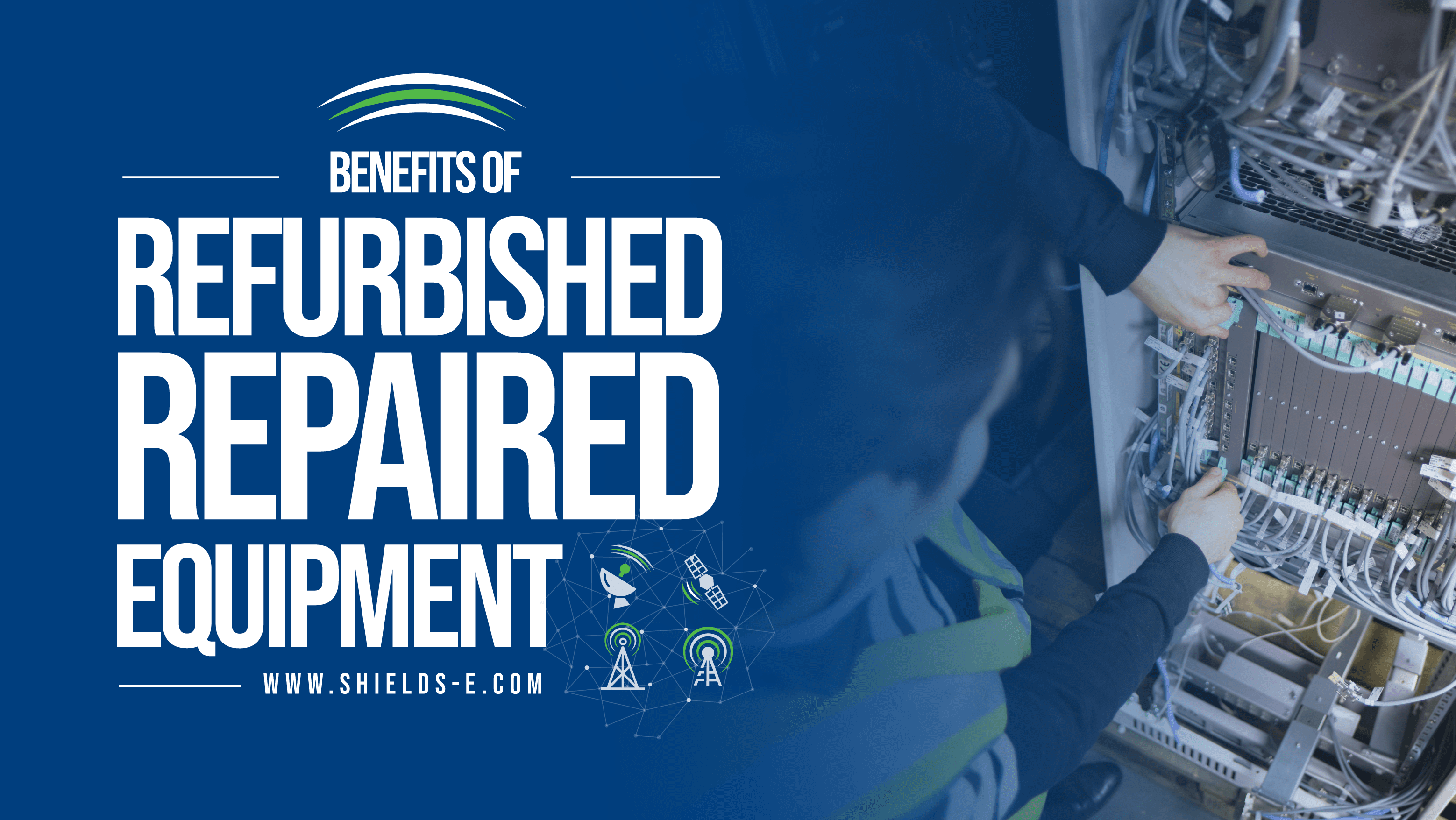Since we began over 40 years ago, Shields has and still is built on the fundamentals of reducing landfill waste within the telecoms industry. We do this by reusing, recycling, repairing or refurbishing equipment and testing it to the same standards as the OEM. Read on to find out more about the impact our work has within the industry.
Over 800 kilotons of network equipment are sold each year. This sizable figure means that thousands of new items are manufactured every week, however, there is an alternative to this traditional model. Shields’ MarketPlace platform is designed to enable network operators to invest in refurbished and repaired equipment rather than purchasing items from the Original Equipment Manufacturer (OEM).
Here we explain the difference between refurbished and repaired equipment and examine the benefits these items could have for your business and the telecommunication industry as a whole.
Refurbished Equipment
The refurbished equipment that is available through the MarketPlace platform consists of stock that has previously been used within a live network. The equipment has been expertly deinstalled before being professionally cleaned and tested against the specifications of the OEM to ensure that it is suitable for redeployment in another network. While each of the items are thoroughly tested, none of the equipment will be opened, manipulated or altered in any way.
Repaired Equipment
Repaired equipment refers to assets that are assumed to be defective and are then repaired by the OEM or a third party. The repair process may be viewed as more complicated than the refurbishment process as it requires each piece of equipment to be opened and assessed. It may then be necessary to carry out a complex component replacement process. As with refurbished equipment, the repaired items must then be tested to ensure they are functional within the OEM specifications before they can be redeployed.
Currently, it is common for defective units to be exchanged for an alternative unit rather than going through the repair process. In many cases, third parties and OEMs are opting to use refurbished equipment to replace faulty parts and there are a number of reasons for this. For example, in some cases, the repair process may take too long and so it is necessary to swap the faulty part for an item from a pool of working equipment in order to manage lead times more effectively. In other circumstances, the part may be beyond economical repair, or it may be too expensive to complete a repair, making it more cost-effective to swap the item for one that is in good working order.
The Advantages of Repaired and Refurbished Equipment
The benefits of using refurbished and repaired equipment rather than purchasing new items directly from the OEM are numerous and far reaching and include advantages for the network operator, the customer, and the environment.
The environmental benefits of using existing equipment are perhaps the clearest as refurbishing and repairing equipment reduces the demand for new products. This, in turn, limits the raw materials that have to be extracted, lowering the number of items that must be manufactured and reducing the need for shipping from overseas. This has the potential to dramatically lower the carbon emissions associated with the telecommunications industry and pave the way for more sustainable working practices.
The urgency of the climate crisis means that companies across the sectors are facing increased scrutiny when it comes to their environmental credentials. As such, adopting a buying model that includes repaired and refurbished equipment could be an important step for network operators seeking to develop robust ESG strategies that are reflective of their commitments to decarbonise the sector.
In addition to offering operators, a strategy for reducing their carbon footprint, using redeployed equipment can also cut their operational expenditure (OPEX) and capital expenditure (CAPEX) spend. The lower prices associated with redeployed assets can reduce the overall cost of maintaining the network without compromising on the quality of the equipment.
The rigorous testing process that each refurbished or repaired item goes through also ensures that there is no more risk with using these parts than using items directly from the OEM. There is a small chance that refurbed or repaired parts may be Dead on Arrival, however, this risk is actually lower than on new parts. This is because the infancy problems that new equipment may have will not occur with equipment that has already functioned in a live network. Redeployed equipment has also typically been in use for between five and seven years and, given that the average lifespan of telecom equipment is 20 to 25 years, the longevity of the assets is intact.
The benefits of using redeployed equipment may also be passed on to the network customers. Redeployed equipment removes the need for assets to be shipped overseas from the OEM and this can significantly shorten the lead-times associated with acquiring items. This may mean that network faults can be repaired more quickly, resulting in less downtime for the client and an improved service.
To find out how you can access our MarketPlace solution to benefit from the points above book a demo here.


